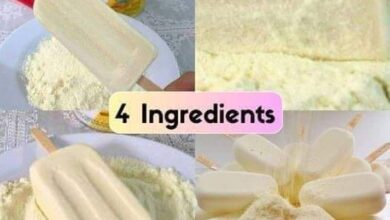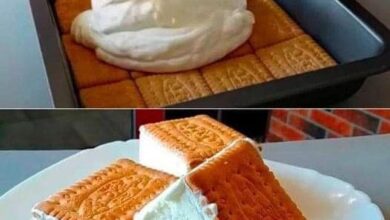
CASTELLA CAKE
CASTELLA CAKE
Castella Cake, a traditional Japanese sponge cake, is a delectable treat that originated in Nagasaki during the 16th century. Its distinctive rectangular shape, golden-brown crust, and soft interior set it apart as a unique delicacy. The cake’s name, “Castella,” is believed to be inspired by Portuguese traders who introduced a similar cake to Japan.
INGREDIENTS
4 large eggs separated
100 grams 1/2 cup granulated sugar
100 grams 2/3 cup cake flour
3 tablespoons honey
INSTRUCTIONS
Preparation:
Preheat the oven to 320°F (160°C).
Line a rectangular baking pan with parchment paper, leaving an overhang on two sides.
Egg Yolk Mixture:
In a mixing bowl, whisk the egg yolks until smooth.
Gradually add in half of the sugar while whisking, until the mixture is pale and creamy.
Whipped Egg Whites:
In a separate clean bowl, whip the egg whites until stiff peaks form.
Gradually add the remaining sugar and continue whipping until glossy peaks are achieved.
Combining Mixtures:
Gently fold the whipped egg whites into the egg yolk mixture until well combined.
Be gentle to preserve the airiness of the batter.
Incorporating Flour:
Sift the cake flour over the egg mixture in batches.
Gently fold the flour into the batter until no streaks remain.
Adding Honey:
Drizzle the honey over the batter.
Carefully fold the honey into the batter until evenly incorporated.
Pouring the Batter:
Pour the batter into the prepared baking pan.
Tap the pan gently on the counter to remove any air bubbles.
Baking:
Bake the cake in the preheated oven for about 40-45 minutes.
The cake is done when a toothpick inserted into the center comes out clean or with a few moist crumbs.
Cooling:
Remove the cake from the oven and let it cool in the pan for a few minutes.
Transfer the cake to a wire rack to cool completely.
Serving:
Once cooled, slice the Castella Cake and enjoy its soft and fluffy texture.
NOTES
Egg Separation: When separating egg yolks from egg whites, ensure there’s no trace of yolk in the whites. Even a small amount of yolk can hinder the egg whites from whipping properly.
Whipping Egg Whites: Whip the egg whites until they reach stiff peaks. The peaks should hold their shape when the beaters are lifted. Over-whipped egg whites can become dry, affecting the cake’s texture.
Gentle Folding: When combining the egg white mixture with the egg yolks, use a gentle folding motion. This preserves the airiness of the batter, resulting in a light cake.
Sifting Flour: Sift the cake flour before adding it to the batter. Sifting removes lumps and aerates the flour, leading to a smoother texture in the cake.
Honey Incorporation: Incorporate honey into the batter gently. Fold it in using the same gentle motion used for combining the egg mixtures. Avoid overmixing.
Even Spreading: After pouring the batter into the pan, ensure it’s spread evenly. This ensures uniform baking and a consistent texture.
Baking Time: Keep a close eye on the cake while it’s baking. Baking time can vary based on oven accuracy and other factors. Perform the toothpick test to determine doneness.
Cooling: Allow the cake to cool in the pan for a few minutes before transferring it to a wire rack. This prevents the cake from sticking to the pan and helps maintain its structure.
Slicing Technique: When slicing the cooled Castella Cake, use a sharp knife. A gentle sawing motion will ensure clean slices without squishing the cake.
Portion Control: Since Castella Cake can be calorie-dense, enjoy it in moderation. Savoring smaller portions allows you to relish the flavor without overindulging.
Flavor Variations: Don’t hesitate to experiment with flavor variations. Consider adding matcha, cocoa, or citrus zest to infuse the cake with unique tastes.
Storage: To maintain freshness, wrap leftover cake slices in plastic wrap or store them in an airtight container. Consume within a few days for the best taste and texture.




